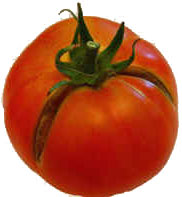One of our loyal blog readers passed on this interesting article about exploding watermelons in China. Seems that Chinese farmers have been overapplying a synthetic growth regulator which has led to the of proliferation of plump pepos (gotta love alliteration!). Of course the media has “blown” this out of proportion with action verbs like “explode” and “erupt”, when what’s actually happening is that the melons are merely splitting. (It’s a pretty boring video if you take time to watch it.)

Ok. This isn’t to defend the practice of misapplying any chemical. But the fear generated is obvious in the comments on this video – just scroll through them. The growth regulator in question is forchlorfenuron – a cytokinin legal in the United States and approved for use in very low concentrations on kiwifruit and grapes to enhance fruit size, fruit set, and cluster weight. It’s been approved for use in the US since 2004 and has been tested extensively prior to that approval for human and environmental safety.
Fruit split happens all the time during ripening. I’m sure most of you have seen this yourself, like when your tomatoes are overirrigated or cherries get unseasonal rain. And it can happen when growth regulators – natural or synthetic – are misapplied. But the fruit isn’t dangerous. It just looks bad, and might not taste that great, either.

There are lots of things to worry about out there. But growth regulators used in fruit production really aren’t one of them.
What would cause the splitting? Did the inside grow faster than the outside?
Kenny, I’m not sure what exactly causes the split in every case, but my understanding is that if the outer tissues have already finished expanding but the internal fruit tissues continue to accumulate water then you get splitting. Generally, we’re warned to cut back watering during fruit set to avoid this. Inappropriate use of growth regulators could alter the fruit’s ability to take up water (in other words, take up more water later in development). I just don’t know for sure, since it’s an area outside my expertise.
Just thought you should know that every time I follow a link from your RSS feed to the actual article, I get an odd-looking page with errors in it (screen shot: http://i1209.photobucket.com/albums/cc394/DirtGently/Miscellaneous/error.jpg). The body of the article and the top menu are replaced by “failed to render control” errors.
@DirtGently, I don’t know what to tell you. When I follow the button I get the correct link: http://feeds.feedburner.com/TheGardenProfessors. Possibly it’s a problem on your end?
The phrase “failed to render control” leads me to believe it’s a Microsoft Sharepoint thing. Plus, I get the error whether I use Chrome, Mozilla, or IE.
I’m subscribed to http://feeds.feedburner.com/TheGardenProfessors in Google Reader. The link I follow from Google Reader to read Jeff’s Bt post looks like this: http://feedproxy.google.com/~r/TheGardenProfessors/~3/–3uXkegrGA/bt-in-the-bloodstream.aspx
I dunno. It’s more of an annoyance more than anything else, because once I get here, I can navigate to the error-free page for the post. At least I know there’s a new article to read when something pops up in the RSS feed 🙂
But forchlorfenuron is a scary sounding chemical and chemicals are bad.
I was definitely disappointed that the watermelons were just splitting and not actually exploding. I wonder why a watermelon exploding is so funny. Especially if unsuspecting people are around. Candid Camera should look into this.
Linda/Dirt Gently – Not to hijack the (very good conversation), but I get the same error myself. I suspect I’m subscribed through the same feed (I have it on my Yahoo page). It’s been going on for at least a month (it was totally broken at one point).
Linda/Dirt Gently/Jo , I always get this error in my Mozilla (and mentioned in in an other comment some months ago). What I do is strip everything that follows .aspx in the address and delete for example “?utm_source=feedburner&utm_medium=feed&utm_campaign=Feed%3A+TheGardenProfessors+(The+Garden+Professors)” . Something in this variable is messing it up.
Here in Greece water melons, when fully ripe, have a very special tension inside and can crack open with a soft slap of the hand. This happens with homegrown water melons we raise in a back yard that have no growth hormones added. Surely, just a bit of growth hormone can tip that tension off the scale and have them erupt spontaneously.